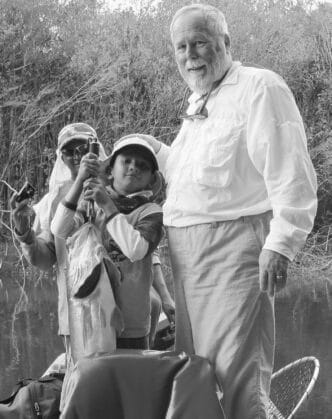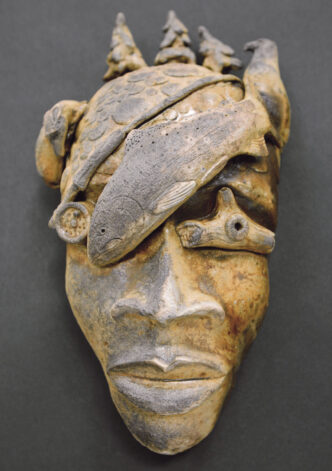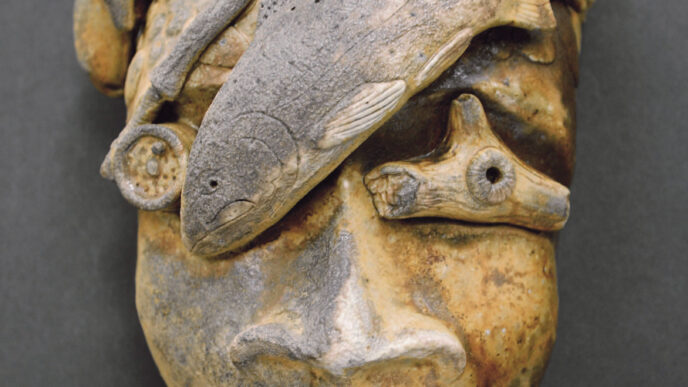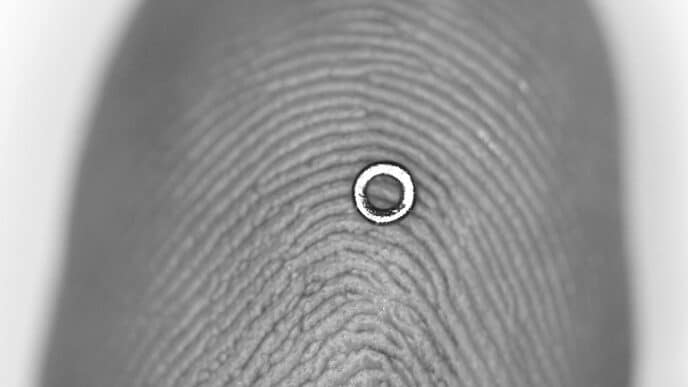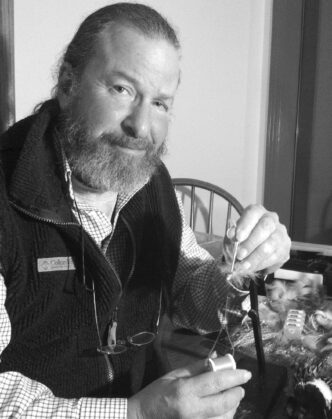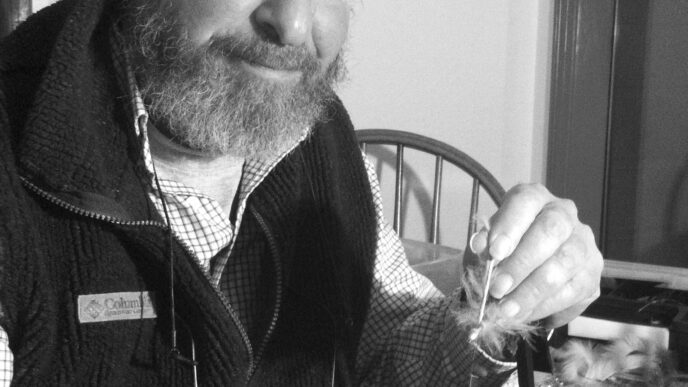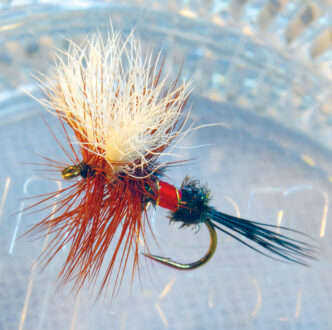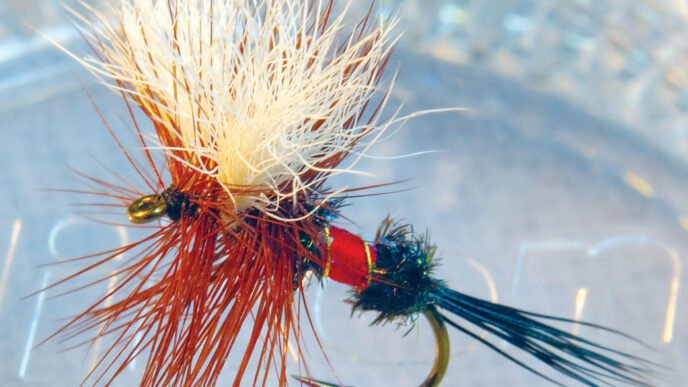If you’re a Northern California fly fisher, you’ve likely heard of Bill Kiene. You may have stopped by his fly shop in Sacramento, or you may just have visited the on-line bulletin board that he hosts (http://www.kiene.com/forums), where some of the state’s most accomplished anglers hang out. Bill has been a major presence on the fly-fishing scene in the Golden State for just a hair short of half a century. He’s seen it all, and now that he is retiring from his business, we figured it would be a good time to ask him about his perspective on our sport.
Bud: When you were a kid, and someone asked, “What do you want to be when you grow up, little boy?” I imagine you didn’t reply, “I wanna be a fly shop owner!” How did a Sacramento kid who’d studied environmental conservation end up in the flyfishing business, then owning a fly shop?
Bill: In the 1960s I was going to college to be a fisheries biologist and working parttime in a sporting-goods store. That store had a very good fly-fishing department that drew fly fishers from many miles away. After a while, I gave up on college (I have ADD) and went to work full-time in the sporting-goods business. I became fascinated with fly fishing and eventually ended up with my own fly shop in 1975.
Bud: You’ve been in the business for almost fifty years. If I walked into a Northern California shop looking for fly-fishing tackle and advice fifty years ago, what would I see? Who would I meet, and what would we talk about? I’m old enough to remember when spin fishing was “the thing to do.” What was the recommended gear for trout in 1965, and what was the recommended fly-fishing setup for trout?
Bill: Whatever sporting-goods store I worked in seemed to be the place to find fly-fishing equipment in Sacramento. Back then, not too many fly shops existed. In 1965, I was spin fishing, plug casting, fly fishing, and hunting, too. I gravitated toward fly fishing because we had some good old-time fly fishers who hung around our store.
Popular conventional fishing rods in those days were old names such as Garcia, Shakespeare, and Fenwick. Reels were Garcia/Mitchell, Quick, Shakespeare, and Penn. In fly fishing, we had Fenwick, Winston, Berkeley, and many others. The Pflueger Medalist was the standard fly reel, with Hardy fly reels for high quality, imported from England. Fly lines were mostly Cortland, Sunset, and Scientific Anglers in those days. After World War II, rods were tubular fiberglass with a few split-cane rods around then too.
Bud: On your store’s website, you devote a page to the “Geezer Patrol,” a group of guys all of whom had fly fished before World War II and all of whom helped, in one way or another, to further not just your career, but interest in fly fishing in Northern California. How did you guys find each other, and how did their support develop over time?
Bill: The members of the “Geezer Patrol,” as some of my friends named them, were the founding fathers of the local fly-fishing club in Sacramento, California Fly Fishermen Unlimited. Some of these guys worked for me, some lent me money, and most of them taught me about fly fishing. Without their help, I don’t think it would have worked out so well. These guys were all from the Greatest Generation, and they hunted and fished their entire lives. I got to fish with these guys, and they helped many of us Baby Boomers learn what we know today about the sport. They used to meet at my shop every Wednesday and go to lunch together. Many of these old guys were in the movie Rivers of a Lost Coast, which tells the story of fly fishing for salmon and steelhead in Northern California over the past 100 years. I think we were like their sons or nephews, who were also drawn to fly fishing, so we had a lot in common with them. Today, we Baby Boomers are the old-timers, and we’re re-paying the debt we owe to the guys in the Geezer Patrol. We seem to enjoy helping the younger anglers learn how to fly fish. I guess we’re the New Geezers.
Bud: The reason I ask that is because today, relationships in fly fishing tend to be mediated electronically. I have friends (real friends, not Facebook “friends” or LinkedIn “connections”) whom I have never met in person and others with whom I’ve been in contact for years, but who I’ve met face to face or fished with only once or twice. At bottom, fly fishing is about people and fish, and not only have the conditions in which fish live changed since you started out, but so have the ways in which people relate and the ways in which they support each other and the sport. How do you view these changes, and how have you adapted to them? (After all, you do host a popular online fly fishing forum.)
Bill: You have to enjoy people if you are going to spend most of your life in a retail fishing tackle store. To me, people are very interesting, and I enjoy talking with them and learning about their experiences, as well. My staff teases me because I usually ask people “Where did you go to high school?” This will tell you something about them. In my 47 years in the fishing tackle business, I have made some of the best friends I have today, and I have also lost many of the older ones.
Today, we make friends over the Internet, which is pretty cool. On our message board, many post fantastic photos they take with their point-and-shoot waterproof digital cameras or cell phone cameras. Interactive media, such as message boards, Facebook, Twitter, texting, and e-mails are pretty wild, considering we did not even have television when I was very young.
Bud: In addition to changes in the conditions under which people and fish live, there obviously have been major changes in the equipment that people use to catch fish. What are the three — OK, five — most significant changes you’ve seen in tackle and techniques since you’ve been in the business?
Bill: Some of the big changes in fly fishing in my career include graphite fly rods, breathable waders, good knotless tapered leaders, and quality tippet material, plus quality Japanese hooks and synthetics in fly tying. Another big change was the introduction of the indicator for dead-drift nymphing. And Spey fishing has had a huge impact on the sport today.
Bud: Have you seen any changes in the types of people who fly fish, or why they fly fish? It’s been twenty years since “The Movie,” A River Runs Through It, appeared. From your perspective, what was our sport like before the film, and how did the film change it, if at all?
Bill: The sport of fly fishing attracts a person who is looking for something more challenging. These seem to be mostly more educated and then naturally more affluent people who are not fishing to put meat on the table, but for the experience.
Fly fishers also seem to have more than average integrity. I say that because in my 37 years of having a fly shop, we have had no personal checks returned from the bank, unless it was for a simple mathematical mistake.
The “Movie” did get many more people out fly fishing, especially for the first few years after its release. Some of them faded away, and some stayed at it. I think that the beauty of the unspoiled outdoors plays a big part in the enjoyment of the sport. Higher elevations, cleaner air, cleaner water, beautiful landscapes, and wild trout are pretty addicting. Movies come and go. It’s the actual experience that hooks people.
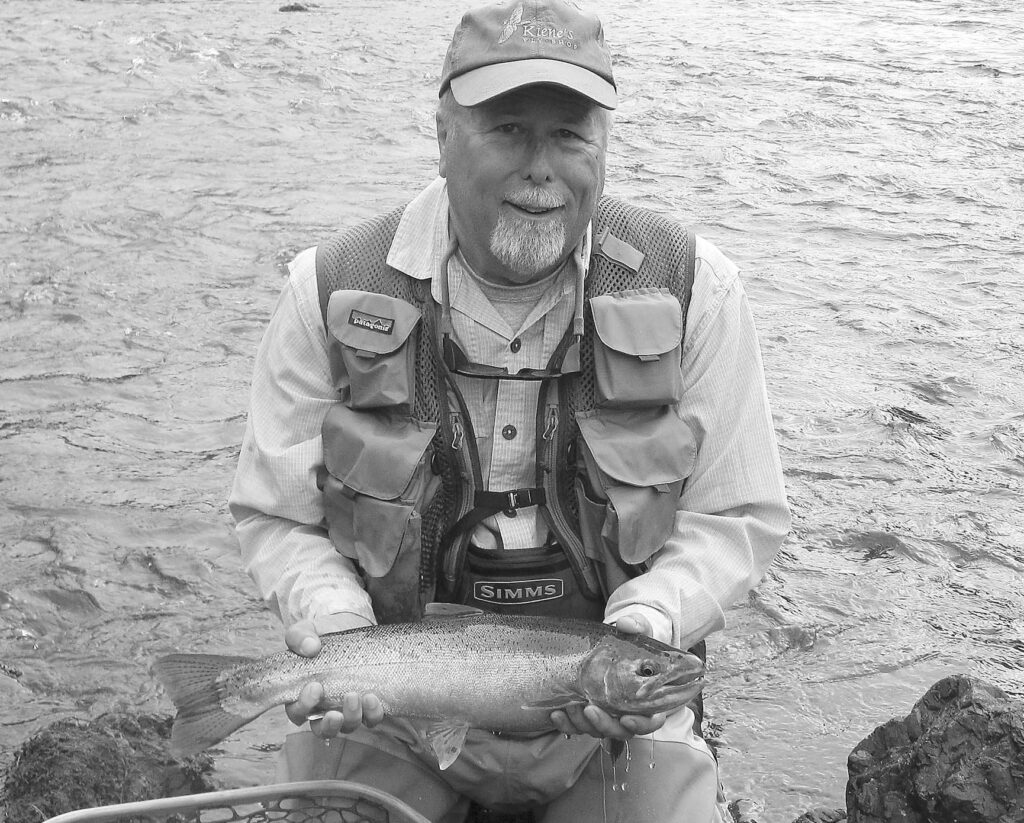
Bud: What has it taken — besides a high threshold of pain — to have stayed in the fly-fishing business all these years, with all the ups and downs that have occurred over that span of time? What do you see the future looking like?
Bill: Getting married to my current wife, Marilyn, probably helped us strengthen the business with the addition of her clerical skills from 30 years at U.C. Davis. We both enjoy what we do — the store and the people we meet and the places we go fishing. We were able to travel to faraway places with groups of our customers, which added excitement to our lives and gave us experience for outfitting fly fishers for exotic travel. Getting a “point of sale” networked computer system about 10 years ago was a good thing, too. It helps you manage your inventory, which is very important as your business grows. And we have added an on-line store to our business, which really helps. We ship product all over the USA now. Our message board really put us on the map, because it is very popular and very active now.
But small business is slowly fading away, especially in California with all the regulations and costs involved. You have to really be on top of your game today to survive, and you need to work a little harder and longer, too.
Bud: I imagine that you don’t have a single favorite destination, but species by species, if you could teleport yourself for free from place to place, where and when would you like to fish?
Bill: I have several favorite places. Christmas Island is a favorite of mine and Marilyn’s. The Dean River in British Columbia is my favorite steelhead destination. The Amazon drainage in Brazil is another wonderful place. We went for years to the Mexican Yucatan and Belize, which are still wonderful places to visit. My trout stream is the Pit River in Northern California. Crane Prairie Reservoir in Central Oregon also has a place in my heart.
Bud: Speaking of California fisheries, do you have any thoughts on how they’ve changed over time and on the future for fly fishers — and for angling — in our state?
Bill: I watched the fisheries in California decline considerably over the past five decades. When I was a teenager, everyone caught fish, even if you had very little skill.
Big schools of shad, salmon, steelhead, and stripers came up the valley rivers to spawn, and people caught them and ate them. Today, you need to be a better angler to catch fish, with their reduced numbers, especially if you are fly fishing for them.
Some fisheries are doing better, especially the big reservoirs with bass and trout in them. Our migratory runs seem to cycle somewhat, with low, medium, and high returns depending on the year. Recently we had a big American shad return in Northern California, and right now we are having an above-average salmon return. Our weather seems to cycle, too, with dry periods when waters get low, warm, and clear and then wet ones were the spring runoff is unfishable.
Bud: You’ve said you’re “looking forward to some retirement years.” Teleporting not being available yet, what plans do you have? And what plans for the business?
Bill: We love our little store and many of the wonderful folks who come into it daily. We are just getting too old for that weekly grind and are ready to have more freedom. We will still live in Davis, California, and we have a little shack in Florida for the winters. We just bought a small motor home for getting out of the Sacramento Valley’s heat in the summer, too. We have six grandchildren, so we will have lots to do.
Bud: And here we are at the traditional Silly Tree Question. If you were a tree, what kind of a tree would you be?
Bill: If I were a tree, I guess it would be a Redwood . . . an old, short, fat, balding one. We love the coast, so that would be where you would find me.



